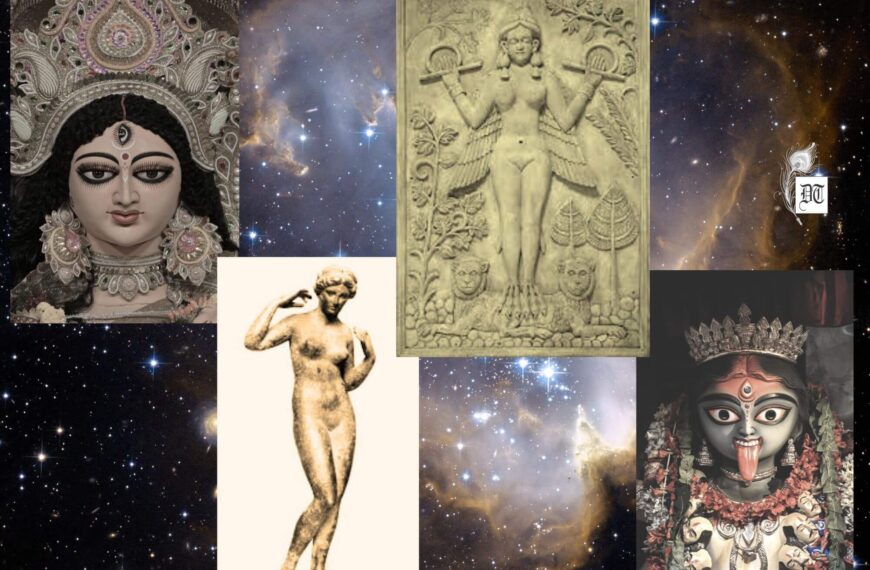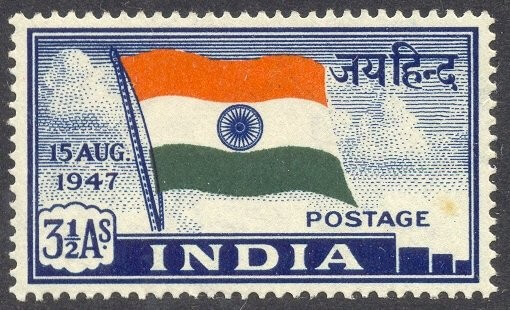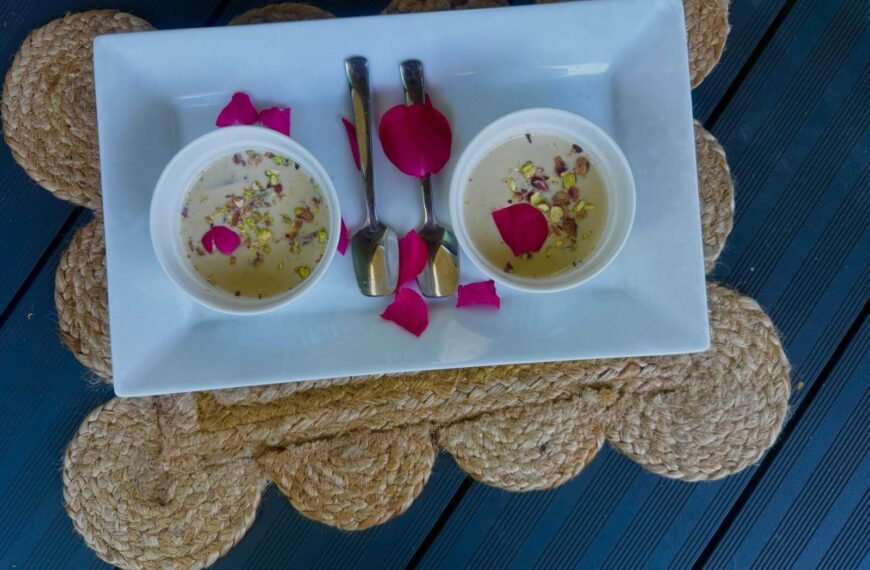Murshidabad, the land of the Nawabs of Bengal, is a must-see for history buffs and those who love grandiose monuments. The architectural beauty, despite ravages of time and utter neglect, speaks of an opulence of a bygone era. Here’s the second and final part of the two-day trip of Anumita, with her family. She tells us about Katgola Bagan, House of Jagat Seth, a wealthy merchant, Tomb of Azim-un- nisa, Jafraganj Burial Ground, Katra Masjid and Hazarduari Palace and Nizamat Imambara. Here are the enchanting details, in the fortnightly column, exclusively for Different Truths.
Next morning was a cold crisp one, as we showered and ordered some tea. A breakfast of hot luchi and alur torkari (wheat fried puffs and potato curry) got us in the mood to visit the Nawabs’ dwellings. Once more, Ratan was waiting at the gate of the hotel with his trusted Tuktuk. He informed us that that day we would be visiting a nearby village called Katgola. Travelling through some paved and unpaved roads we made our way towards our first destination for the day.
Katgola Bagan
This place has few references as Katgola Bagan, Katgola Bagan Bari (Katgola Palace) or Katgola Temple. These three things comprise the whole premises of Katgola. Katgola Palace (kat meaning timber and golap meaning rose) or the Baganbari (bagan is garden and bari means house) was built by Lakshmipat Singh Dugar. He was a wealthy merchant, who traded roses and timber. The rose garden still exists but most of the 30acres of land are covered by thick mango groves. In the center of the premises stand a yellow palatial house, this is referred as the Banganbari or the Palace.
The Palace has a high portico entrance supported with arches over which are two more floors supported by pillars. It is a magnificent architectural piece. Colored in sunset ocher and the moldings in white, it stands out in the field of dark green surrounding it. A huge pond with paved boundary is in front of the portico of the building. There are two pairs of steps leading into the pond on opposite sides.
A huge pond with paved boundary is in front of the portico of the building. There are two step ways on opposite sides, which descend into the pond. It is said that once there were huge fishes in the pond and they were more as pets rather than used as food. The owners were Jains, so were vegetarian.
The area of the Katgola had a beautiful marble temple. With all the deities and their Guru’s images and idols inside the temple, photography is strictly prohibited. There is a bigger pond almost the size of a small lake in front of the temple. Paddle boats are present there for a nice boating experience. We found an animated guide, who narrated the history of the owners and their relationship with Jagat Seth, a wealthy merchant during the Nawab’s time.
In his singsong narrations, he mentioned about a secret passageway alongside the Palace which had a tunnel way to Jagath Seth’s house. It was believed that both these traders exchanged money and diamonds in this tunnel way. When the Nawab came to know about these secret exchanges, he sent his people to capture the traitors. Sadly, the tunnel now is water logged due to the flood of the river Ganga.
Today, this magnificent building is used for film and TV serial shooting. A beautiful part of history, well maintained.
House of Jagat Seth
Further down the road, we stop at the house of Jagat Seth. He was one of the wealthiest bankers during the reign of Siraj-ud-Daula. He and his clan ruled the monetary circuit of north Bengal. His shady operation with the rich zamindars got the attention of the Nawab. He conspired against the Nawab with Mir Zafar and the East India Company. Later, during the reign of Mir Kasim, the successor of Mir Zafar, the whole family of Jagat Seth was beheaded. His house is now converted into a museum filled with artifact and pictures of the times of the Nawabs. There is a grand Jain temple in the premises.
By then the sun was almost midway in the sky and it was getting warm. We stopped to treat ourselves with some soothing fresh coconut water and few snacks. Sitting down in the Tuktuk, we travelled to our next destinations. Ratan told us that these two stops are short ones, as they do not have much left to see. The ruins of the Tomb of Azin-un-nisa and the Jafraganj Burial Ground were are next stops.
Tomb of Azim-un-nisa
Azim-un- nisa was the daughter of the first Nawab of Bengal, Murshid Quili Khan. She was married to Suja-ud- Daula. A mosque, which was built, in 1734, once stood in this area, but unfortunately only the doorway and the raised platform are left. An earthquake had razed the whole structure to the ground.
Folklore has it that Azim-un- nisa was very ill and the royal hakim (doctor) had prescribed the liver of a human being as a medicine. After her recovery, she was still addicted to the same prescription. The story says that her father heard this and buried her alive to stop her from committing such heinous crimes. She was buried below the staircase of the raised platform of the Masjid. In his views, the number of people, who stepped over her grave would relinquish her of her sins. Such a morbid tale marred the beauty of the remaining magnificent structures.
Jafraganj Burial Ground
The burial ground of the Nawabs and their families lies in these 3.5 acres of land. It is an enclosed cemetery built by Mir Zafar. The cemetery is also under the Archeological Survey of India but its maintenance is the worst of its kind. Overgrown weeds and trees have destroyed many of the mausoleums and their basic structures of the grave sites. The whole atmosphere is very morbid, maybe a bit haunted if we did not visit it during the mid afternoon. Few minutes were more than enough for us at this place.
The Tuktuk headed for Katra Masjid and Ratan promised there will be few vendors over there where we could buy some souvenirs.
Katra Masjid
Build during the years 1723-24 by Nawab Mursid Quli Khan, it was the center of Islamic learning. It is also the tomb of the Nawab, who rest at the entrance under the staircase. The whole structure is built on a raised platform with four octagonal minars (towers) on its corners. These minars have a tapering shape and the whole brick structure of the Masjid had main three domes. It was to accommodate as many as 800 Quran readers at a time.
Earthquakes have destroyed much of the structure but still it stands strong. The whole construction does not have any pillars to support it. Many arches and the solid quadrangular plinth is the base supports the upper structure. The base plinth has crisscross brick inlay patterns all over it. The immensity of the structure becomes real as we walk along the open patio on the raised platform.
The Nawab wanted to be buried in a place near to the Masjid. He believed the footfalls of the holy men visiting the Masjid should trod over him and that would give his soul peace. According to his wishes, his mortal remains were buried under the entrance staircase of the Masjid.
Once we got out of the gates of the well-manicured garden of the Masjid, mother and me bee-lined towards the vendors. There were beautiful artifacts made in shapes of the monuments and ruins of Murshidabad. We found something things for gifts and some for mementoes and made our purchases. A quaint place to eat lunch was our next stop. Satisfied after lunch, the Tuktuk drove along the village roads towards the main attraction, the Hazarduari Palace.
Hazarduari Palace
Built during 1824-38 under the patronage of Nawab Nazim Humayu Jha, the Hazarduari was also called the Baro Koti (big house). As the architect was Duncan Macleot, the magnificent structure has a distinct western look. A huge rectangular building has massive pillars along the front and the sides of the building. An impressive three storied building painted in a pale yellow with lined up windows and doors in green. The Hazarduari (thousand doors) got its name from its numerous doors and windows on each side of the building. Out of the thousand doors, nine hundred of them are false. They were made so the intruders would get baffled and cannot escape. There is a total of 114 rooms in the Palace.
Since 1985, this building is under the Archeological Survey of India. One floor of the building is open to public in form of a museum. The upper and lower floors do not have admittance of the general public. The palace now consists of 20 display galleries and more than 4000 pieces of artifacts of which only a little more than 1000 are put on display. It is considered to be the largest site museum by the Archeological Survey of India. Among the display items a chandelier, second to the one at Buckingham Place, was a gift from the Queen to the Nawab. There is also a pair of mirrors set at a 90 o angle, so the Nawab could spot anyone who was lurking to harm him while he was in his quarters.
The Hazarduari is such a grand building that a whole article can be written for it. This palace is in the premises of another grand structure called the Imambara. These grandiose buildings stand on a campus called the Nizamat Kila. An ancient fort used to occupy this location. Later it was demolished to build the Hazaraduari and the Imambara. Other structures like the Wasif Manzil, the Bacchawali Tope, Murshidabad Clock Tower, three mosques out of which one is the Madina Mosque and the Nawab Bahadur’s Institution are on the campus.
Nizamat Imambara
This white rectangular and green windowed structure was built 1846-47 by Nawab Nazim Masur Ali Khan. It was built in 11 months after the wooden Imambara built by Siraj-ud- daula was burned down. It is the largest in India. It faces the north side of the Hazarduari and is 680 feet long. The breath of the structure varies; the distance at the longest side of the width is about 300 feet long. It is closed to the public. It opens only for ten days during the days of the Muharram.
By then the sun was on the western horizon. A feeling of living with the Nawabs, and the fabulous historical structures and their stories filled up mind. We decided to have a relaxed evening on the bank of the Ganga and watch the sun set.
Next morning, it was time to drive back to modern civilisation, Kolkata. This trip provided an opportunity for me to show a bit of our heritage to my children, who are second generation Americans of Indian heritage.
©Anumita Chatterjee Roy
Pix by Author.

















 By
By
 By
By